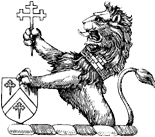
An American Catholic in Panama
REVERT'S ROSTRUM
The first Sunday after we moved to Panama, I drove my family to the only English-language Catholic parish in the capital, located in the former Panama Canal Zone. The zone, readers will recall, was governed as a concession of the United States for approximately 75 years. This Sunday was during the rainy season, and the showers did not disappoint, flooding roads both unfamiliar and treacherous given the proliferation of potholes.
The parish, run by a couple of American Vincentian priests, was relatively small; there were only 50 or 60 people in attendance, even though a handful of children were receiving their First Communion. Our family of seven was rather conspicuous, increasing the size of the congregation by ten percent, and we were warmly greeted by several volunteers and families.
The liturgy, I’d wager, was not much different from that in many Catholic parishes in the United States; its music and informality reminded me of the Methodist or Episcopalian services I attended in the two decades I was a Protestant. It certainly was a departure from our “trad-lite” Catholic parish in Virginia. The priest requested we stand so everyone could applaud us, the new visitors. Before the benediction, he asked those with upcoming travel plans to proceed to the front to receive a blessing, not only from the priest but from all parishioners present, who solemnly raised their hands.
Before moving here, I didn’t have a clear idea of what Catholicism in Panama might look like. I knew there was at least one English-language parish in the country, and, given the large number of American expatriates, I presumed there would be others (there is, to my knowledge, now a grand total of two). Even if there weren’t, I wagered, there were probably a variety of Spanish-language options that existed on a liturgical spectrum, similar to any major American metropolitan area. Panama is, after all, a majority Catholic nation, and, from what I had observed during a brief trip to the country before we relocated, is a far more outwardly religious society than the United States.
You May Also Enjoy
The American founders followed Plato and Aristotle in acknowledging man’s inclination to consolidate power, indulge his passions, and oppress his fellowman.
Jesus chose for His mother’s guardian the disciple “whom He loved.” There were few, if any, who were better fit for such an important task than St. John.
It is a cruel irony that, in less than a century, Catholics have gone from being victimized as unwelcome immigrants to being widely perceived as racist victimizers.

